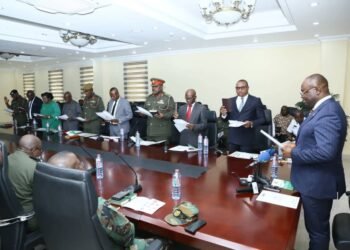In a significant escalation of its ongoing offensive against Hezbollah, Israel has initiated “limited, localized, and targeted ground raids” in southern Lebanon.
The Israel Defense Forces (IDF) stated that the operation targets the Iran-backed group’s “infrastructure,” which it claims poses an immediate threat to Israeli communities in northern Israel.
The IDF confirmed that troops have crossed the border following a buildup of tanks and other armored units in the region.
Israeli air attacks also continued across Lebanon, including in the town of Daoudiya, where at least 10 people have been killed in a strike on a home.
The home of Munir al-Maqdah, a Brigadier-General with the Fatah-aligned al-Aqsa Martyrs Brigade in Lebanon, was also bombed in the Ein al-Hilweh refugee camp in Sidon, killing five people.
Local media reports suggest al-Maqdah has survived the Israeli assassination attempt, but his son was killed in the strike.
It marks a worrying turn in the ongoing conflict with Hezbollah. While Israel frames these actions as a defensive measure, they risk further inflaming an already volatile situation.
Hezbollah, on the other hand, attacked “a movement of enemy soldiers in Metula with artillery shells.” It added that it targeted a “gathering of enemy soldiers” in the same area with rockets.
The Israeli army said on X that five rockets were fired from Lebanon towards Metula. Some were intercepted while the rest fell into an open area.
US Secretary of Defense Lloyd Austin, in a call with his Israeli counterpart Yoav Gallant, said that Washington supported Israel in the “necessity of dismantling [Hezbollah] attack infrastructure along the border” with Lebanon in order to prevent “October 7-style attacks on Israel’s northern communities.”
Austin also warned Iran of the consequences should it choose to fight with Israel.
Israel Applying Lessons Learnt
Commenting on Israel’s move, Rodger Shanahan noted that the Israeli army has “learned lessons” from the last conflict and has been “degrading” Hezbollah for the past year.
“It’s much more planned than it was in 2006, much more preparatory work, and Hezbollah has been degraded to a point they weren’t in 2006,” the former liaison officer with the Australian military during the 2006 war between Israel and Hezbollah, said.
With about 30,000 soldiers on the border of southern Lebanon, Shanahan said that the next military moves depend on the level of resistance from Hezbollah
“The problem is the political aim of Prime Minister Benjamin Netanyahu is the return of 60,000 Israelis to the north. If you’re Hezbollah, it doesn’t take many rockets to be fired into the north to make that too dangerous for the Israeli citizens to return.
“It’s very difficult for the military to achieve the political aim. Whether you can make sure the north of Israel is going to be safe for everybody to return is another issue – and that’s a political issue as much as it is a military issue.”
Rodger Shanahan
Also, Omar Rahman, a fellow at the Middle East Council on Global Affairs, opined that Israel’s deployment of a limited number of special forces soldiers inside southern Lebanon “makes perfect sense.”
“Obviously, Israel would be making a fatal mistake to send in, at the start, a massive ground invasion given what has happened in the past fighting Hezbollah,” Rahman stated, referring to Israel’s two earlier invasions of Lebanon in 1982 and 2006, which ended in withdrawal amid Hezbollah’s growing attacks.
He suggested that Israel’s ground operation is likely an attempt to measure the strength of remaining Hezbollah forces ahead of a larger offensive.
“It’s bombarded the whole of the south. Now it is sending in these special forces, which are a sort of expeditionary force to probe and see the landscape, see the level of Hezbollah resistance that remains in light of both the bombardment and the confusion that must be existing within Hezbollah’s ranks as a result of the assassinations, the killing of Hassan Nasrallah and a lot of the senior leadership.”
Omar Rahman
READ ALSO: Union Leaders Express Doubts Ahead of Crucial Education Strike Meeting



















